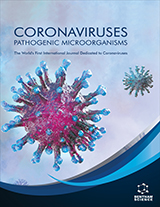Abstract
The novel coronavirus infection (COVID-19) is a global public health emergency. Since its outbreak in Wuhan, China in December 2019, the infection has spread at an alarming rate across the globe and humans have been locked down to their countries, cities and homes. As of now, the virus has affected over 20 million people globally and has inflicted over 7 lac deaths. Nevertheless, the recovery rate is improving with each passing day and over 14 million people have recuperated so far. The statistics indicate that nobody is immune to the disease as the virus continues to spread among all age groups, newborns to the elders, and all compartments including pregnant women. However, pregnant women may be more susceptible to this infection as they are, in general, highly vulnerable to respiratory infections. There is no evidence for vertical transmission of the COVID-19 virus among pregnant women, but an increased prevalence of preterm deliveries. Besides this, the COVID-19 may alter immune response at the maternal-fetal interface and affect the well-being of mothers as well as infants. Unfortunately, there is limited evidence available in the open literature regarding coronavirus infection during pregnancy and it now appears that certain pregnant women have been infected during the present 2019-nCoV pandemic. In this perspective, we study the impact of the COVID-19 infection on vertical transmission and fetal outcomes among pregnant women.
Keywords: COVID-19, pregnancy, SARS, MERS, clinical manifestation, vertical transmission, fetal outcome.
[http://dx.doi.org/10.1002/jmv.25681] [PMID: 31967327]
[http://dx.doi.org/10.1038/nature12711] [PMID: 24172901]
[http://dx.doi.org/10.3201/eid1212.060401] [PMID: 17326933]
[PMID: 23787162]
[http://dx.doi.org/10.1016/j.ajog.2003.11.019] [PMID: 15295381]
[http://dx.doi.org/10.1016/S0140-6736(20)30251-8] [PMID: 32007145]
[http://dx.doi.org/10.1016/j.jmii.2018.04.005] [PMID: 29907538]
[http://dx.doi.org/10.1001/jama.2010.479] [PMID: 20407061]
[http://dx.doi.org/10.1016/S0140-6736(20)30360-3] [PMID: 32151335]
[http://dx.doi.org/10.1016/S0140-6736(20)30365-2] [PMID: 32151334]
[http://dx.doi.org/10.1002/jmv.25787] [PMID: 32219871]
[http://dx.doi.org/10.5858/arpa.2020-0901-SA] [PMID: 32180426]
[http://dx.doi.org/10.3390/v12020194] [PMID: 32050635]
[http://dx.doi.org/10.1002/jmv.25789] [PMID: 32222119]
[http://dx.doi.org/10.1016/S1473-3099(20)30176-6] [PMID: 32220284]






























